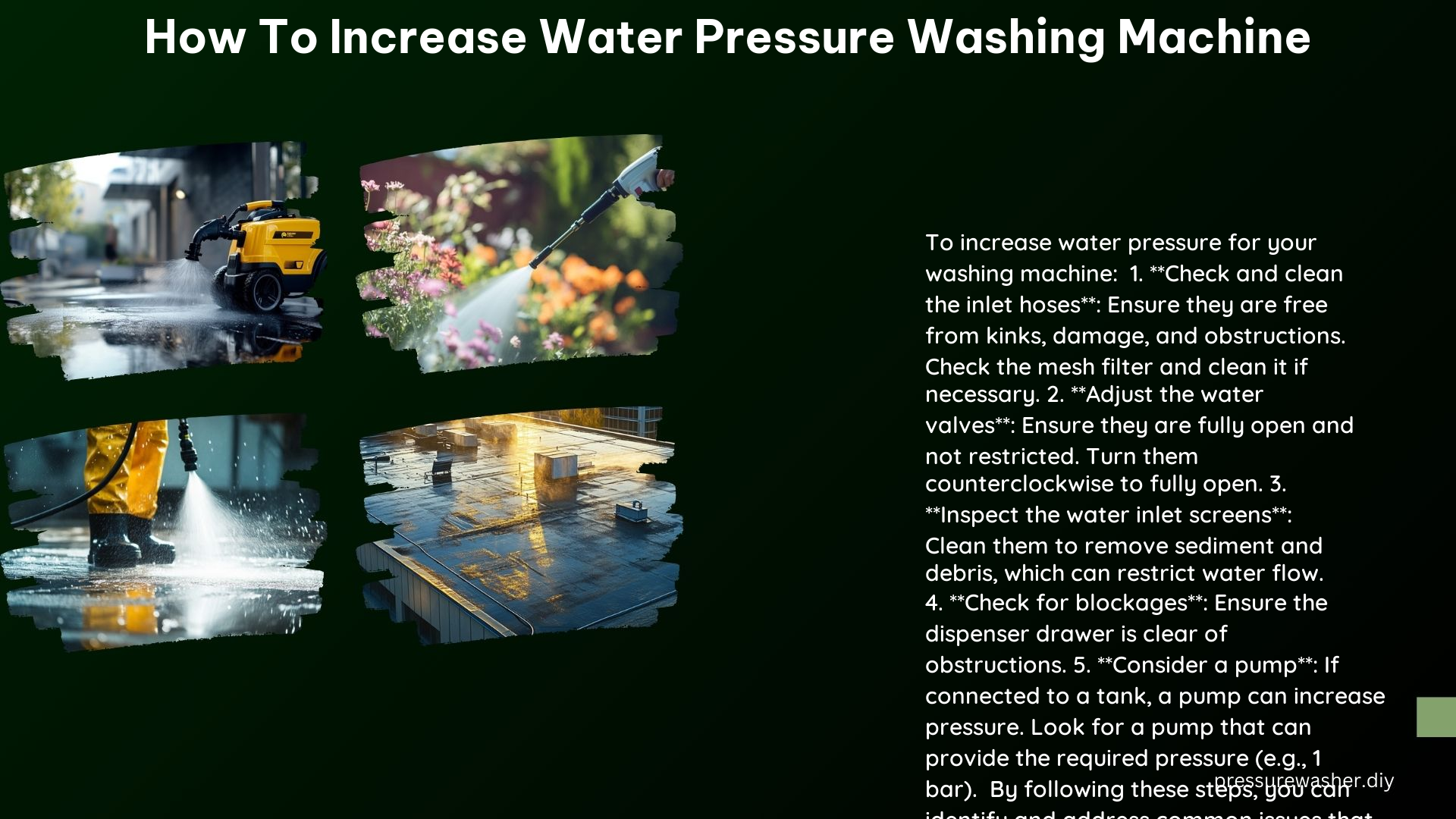Having a washing machine with adequate water pressure is crucial for efficient cleaning and optimal performance. If you’re experiencing low water pressure in your washing machine, don’t worry – there are several steps you can take to troubleshoot and resolve the issue. In this comprehensive guide, we’ll walk you through the process of increasing water pressure in your washing machine, providing you with detailed instructions and technical specifications to ensure a successful outcome.
Inspect and Clean the Water Inlet Screens
The first step in increasing your washing machine’s water pressure is to check for any debris or obstructions in the water inlet screens. These screens are designed to filter out impurities and prevent them from entering the machine, but over time, they can become clogged, reducing the water flow.
To inspect and clean the water inlet screens:
- Turn off the water supply to your washing machine.
- Unscrew the hoses from the back of the machine.
- Remove any debris from the screens using a needle-nose pliers and a soft-bristle brush, while running water over the screens to flush out any remaining particles.
- Reattach the hoses and turn the water supply back on.
Inspect and Clean the Water Hoses

Next, you’ll want to inspect and clean the water hoses that connect your washing machine to the water supply. Look for any kinks, damage, or obstructions that could be restricting the water flow.
- Check the stopcock (shut-off valve) to ensure it is fully open, allowing maximum water flow.
- Unscrew the water main inlet hose and inspect the mesh filter. Remove any debris or buildup using a small brush or needle-nose pliers.
- Reattach the hose and turn the water supply back on.
Measure the Water Pressure
To determine if the water pressure is the root cause of your issue, you’ll need to measure the pressure using a water pressure gauge. The ideal water pressure range for most washing machines is between 0.5 bar (7.25 psi) and 8 bar (116 psi).
- Attach the water pressure gauge to the water supply line, either at the washing machine connection or at the nearest accessible point.
- Turn on the water and take a reading. If the pressure is outside the recommended range, you’ll need to take further action to increase it.
Install a Water Pressure Booster Pump
If the water pressure is too low and you’re unable to connect your washing machine to a mains water supply with sufficient pressure, consider installing a water pressure booster pump. This device will increase the water pressure to the required level, ensuring your washing machine operates at optimal efficiency.
When selecting a water pressure booster pump, make sure to choose one that can provide the necessary pressure and flow rate for your specific washing machine model. As a general guideline, most washing machines require a minimum flow rate of 12 liters per minute (3.17 gallons per minute).
Adjust the Water Pressure on a Samsung Washing Machine
If you have a Samsung washing machine and are experiencing low water pressure, there are a few additional steps you can take to troubleshoot and adjust the pressure:
- Check for a 4C error code, which indicates low water pressure.
- Ensure the inlet hose is free of kinks and obstructions.
- Clean the mesh filter located at the water inlet connection.
- If the issue persists, contact Samsung customer service for further assistance and guidance on adjusting the water pressure settings on your specific model.
By following these comprehensive steps, you should be able to successfully increase the water pressure in your washing machine, ensuring optimal performance and efficient cleaning. Remember to always prioritize safety and consult a professional if you’re unsure about any of the procedures.
References:
- YouTube Video: Low Water Pressure at Your Washing Machine? SOLVED !
- PistonHeads Discussion: Pump to Increase Water Pressure for Washing Machine
- Family Handyman Guide: Slow-Filling Washing Machine? Here’s a Simple Fix
- Reddit Discussion: Low Water Pressure to My Washing Machine
- YouTube Video: How to Adjust the Water Pressure in Your Washing Machine
